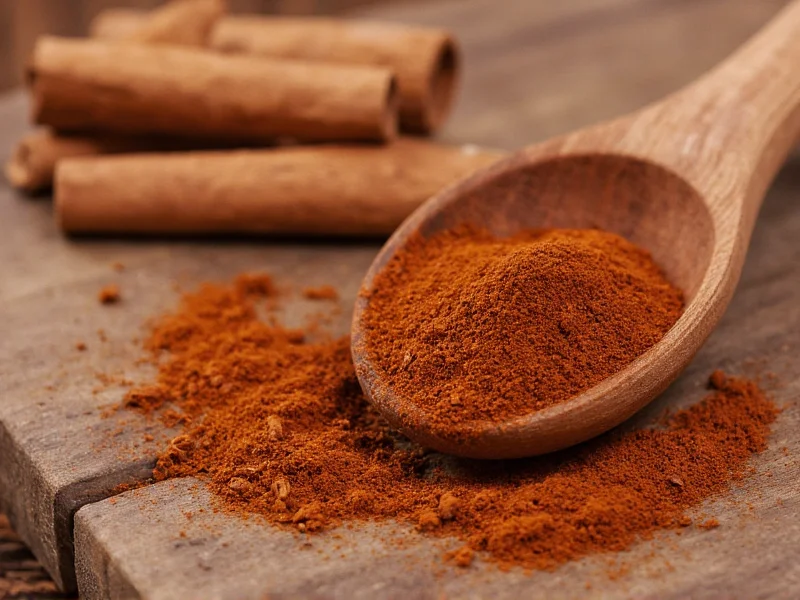Cassia bark spice represents one of the most widely consumed cinnamon varieties globally, despite significant differences from the more delicate Ceylon cinnamon. Understanding its unique properties helps home cooks and professional chefs make informed decisions about its culinary applications and potential health considerations.
Origins and Botanical Background
Native to southern China and northern Vietnam, cassia bark comes from the Cinnamomum cassia tree, an evergreen species in the Lauraceae family. Harvesters remove the outer bark from mature trees, then scrape the inner bark which naturally curls into the familiar quill shape as it dries. This process differs slightly from Ceylon cinnamon production, contributing to cassia's thicker, harder sticks and more intense flavor profile.
Cassia vs. Cinnamon: Understanding the Critical Differences
Many consumers don't realize that most "cinnamon" sold in North America and Europe is actually cassia. The distinction matters both culinarily and for health reasons. The following comparison highlights key differences between these commonly confused spices:
| Characteristic | Cassia Bark | Ceylon Cinnamon |
|---|---|---|
| Source Tree | Cinnamomum cassia | Cinnamomum verum |
| Appearance | Thick, single-layered quills with rough texture | Thin, multiple-layered quills with delicate texture |
| Flavor Profile | Strong, pungent, slightly bitter with pronounced sweetness | Milder, sweeter, more complex with citrus notes |
| Coumarin Content | High (2.1-6.6 mg/g) | Very low (0.004-0.14 mg/g) |
| Common Regions | China, Indonesia, Vietnam | Sri Lanka, Madagascar, India |
Culinary Applications of Cassia Bark
Cassia's robust flavor makes it particularly well-suited for specific culinary applications where its intensity won't be overpowered. Professional chefs often prefer cassia in:
- Slow-cooked savory dishes like Chinese five-spice powder, Indian curries, and Middle Eastern stews
- Baked goods requiring strong spice presence such as snickerdoodles, pumpkin pie, and gingerbread
- Spiced beverages including chai tea, mulled wine, and traditional Chinese medicinal teas
- Preserves and compotes where its flavor holds up during long cooking times
When using whole cassia sticks, remember they require longer infusion times than ground spice to fully release their flavor compounds. For best results in baking, grind sticks fresh using a dedicated spice grinder for optimal aroma and potency.
Practical Usage Guidelines
Understanding proper cassia bark spice measurements prevents overpowering dishes. Consider these practical tips:
- Substitute cautiously: Use 3/4 teaspoon ground cassia for every 1 teaspoon of Ceylon cinnamon in recipes
- Whole stick conversion: One 2-3 inch cassia stick equals approximately 1 teaspoon ground spice
- Infusion timing: Add whole sticks early in cooking processes for soups, stews, and braises
- Remove before serving: Whole sticks become unpleasantly woody if left in finished dishes
- Storage: Keep in airtight containers away from light and heat to preserve volatile oils
Health Considerations and Safety
While cassia bark spice offers potential health benefits, its high coumarin content requires mindful consumption. Coumarin, a naturally occurring compound, can cause liver damage when consumed in large quantities over time. The European Food Safety Authority recommends a maximum daily intake of 0.1 mg coumarin per kilogram of body weight.
For an average 60 kg adult, this translates to approximately 1-2 teaspoons of ground cassia bark spice daily as a safe upper limit. Individuals with liver conditions or those consuming cassia regularly should consider switching to Ceylon cinnamon, which contains negligible coumarin levels. Always consult with a healthcare provider before using cassia therapeutically, especially if taking medications metabolized by the liver.
Traditional Medicinal Uses
Traditional Chinese Medicine has utilized cassia bark (known as Rou Gui) for centuries to address digestive issues, cold symptoms, and circulation problems. Ayurvedic practitioners similarly employ it for warming properties and metabolic support. While modern research shows promising anti-inflammatory and antimicrobial properties, scientific evidence supporting specific therapeutic claims remains limited. Current studies focus on cassia's potential effects on blood sugar regulation, though results should not be interpreted as medical advice.
Proper Storage Techniques
Maximize shelf life and flavor retention by storing cassia bark properly. Whole sticks maintain quality for 3-4 years when stored in airtight containers away from light and moisture. Ground cassia retains optimal flavor for 6-12 months under similar conditions. For extended storage, consider freezing whole sticks in vacuum-sealed bags, which preserves volatile compounds for up to five years. Avoid storing near heat sources like stoves or ovens, as temperature fluctuations accelerate flavor degradation.
Substitution Strategies
When cassia isn't available, understanding appropriate substitutions prevents recipe failures. For savory applications, consider:
- Chinese five-spice powder (use 3/4 teaspoon for each teaspoon of cassia)
- A blend of equal parts allspice, cloves, and star anise
- Regular cinnamon in equal amounts (though flavor will be milder)
For sweet applications requiring cassia's intensity, try:
- Ceylon cinnamon with a pinch of ground cloves
- Apple pie spice blend (typically contains cassia anyway)
- A combination of cinnamon and a tiny amount of black pepper for complexity











 浙公网安备
33010002000092号
浙公网安备
33010002000092号 浙B2-20120091-4
浙B2-20120091-4